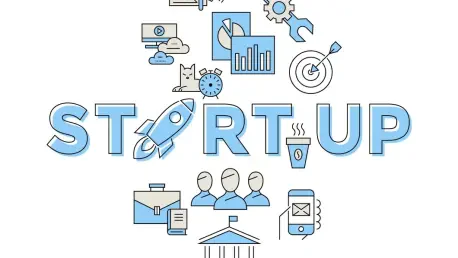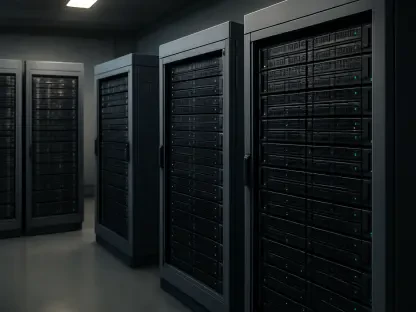The Software as a Service (SaaS) industry is booming, with global market projections estimating a value of over $300 billion by the end of this year, presenting an unprecedented opportunity for aspiring entrepreneurs. This explosive growth opens doors even for those without a shred of coding knowledge to turn their ideas into reality. Picture a scenario where a brilliant business idea sits untapped simply because the technical barrier seems insurmountable. That barrier no longer exists. Today, non-technical founders can transform concepts into fully functional platforms using accessible tools and strategic partnerships. This guide aims to empower such individuals by providing a clear, actionable roadmap to launch a SaaS company without programming expertise.
The purpose of this comprehensive walkthrough is to demystify the process of starting a SaaS business for those lacking technical skills, addressing the unique challenges faced by non-coders while highlighting the tools and strategies that make success achievable. By following the outlined steps, readers can navigate from ideation to product launch and beyond, leveraging the democratized tech landscape of 2025. The importance of this guide lies in its focus on practical solutions, ensuring that anyone with a vision can enter the competitive SaaS market with confidence.
This roadmap is designed to break down complex processes into manageable tasks, covering everything from validating a business idea to scaling a product for long-term growth. Each section offers detailed insights into no-code solutions, cost considerations, and collaboration with technical experts. By the end, readers will have a thorough understanding of how to build a viable SaaS company without ever writing a line of code. The journey begins with understanding why the current year is a golden opportunity for non-technical entrepreneurs.
Why 2025 Is the Perfect Year for Non-Technical SaaS Founders
The SaaS industry in 2025 stands as a beacon of opportunity for non-technical founders, thanks to the rapid democratization of technology. No-code and low-code platforms have revolutionized the way products are built, allowing individuals without programming skills to create functional prototypes and even full-scale applications. This shift has opened doors for entrepreneurs who might have previously been sidelined by technical barriers, enabling them to bring innovative ideas to life with minimal hurdles.
Beyond the tools themselves, the SaaS market continues to expand at an extraordinary pace, driven by increasing demand for cloud-based solutions across industries. Businesses of all sizes are seeking niche software to solve specific problems, creating a fertile ground for targeted innovations. Non-technical founders can capitalize on this trend by focusing on unique value propositions, using accessible platforms to test and refine their offerings without needing deep technical knowledge.
This guide will walk through essential steps such as validating a business concept, developing a Minimum Viable Product (MVP), and planning for scalability, all tailored for those without coding expertise. Success in this space hinges on leveraging the right resources and adopting strategic approaches to overcome any gaps in technical know-how. With the current tech landscape, non-technical entrepreneurs are better positioned than ever to make a significant impact in the SaaS arena.
The Evolving SaaS Landscape: Opportunities for Non-Coders
The SaaS industry in 2025 is characterized by remarkable accessibility, largely due to the proliferation of no-code and low-code platforms like Webflow, Bubble, and Glide. These tools empower non-technical founders to build prototypes and launch products without writing a single line of code, significantly lowering the entry barriers that once defined tech startups. This technological evolution means that a compelling idea and a clear understanding of market needs are now the primary requirements for entry.
However, the competitive nature of the SaaS market cannot be overlooked, as countless startups vie for user attention in an increasingly crowded space. Identifying a niche solution that addresses specific pain points is critical for standing out, especially for those without technical backgrounds who must rely on strategic positioning. Non-coders can gain an edge by focusing on underserved markets or unique user experiences, using accessible tools to quickly test and iterate on their concepts.
Strategic partnerships also play a pivotal role in bridging the technical gap for non-technical founders. Collaborating with development firms or leveraging community support from no-code ecosystems can provide the necessary expertise to refine and scale a product. By combining these resources with keen business acumen, non-coders can navigate the complexities of the SaaS landscape and carve out a successful path in this dynamic industry.
Step-by-Step Guide to Building Your SaaS Without Coding
Launching a SaaS company as a non-technical founder requires a structured approach to ensure every phase of the journey is handled effectively. This section provides a detailed, actionable roadmap to guide readers through the process of turning an idea into a thriving business. Each step focuses on practical implementation, tailored to those without coding skills, ensuring a clear path forward.
The following steps cover everything from initial research to long-term growth planning, emphasizing the use of no-code tools and strategic collaborations. By breaking down the process into manageable tasks, this guide aims to remove intimidation and replace it with clarity, ensuring that readers can confidently follow this blueprint to build a SaaS product that meets market needs and achieves sustainable success.
Step 1: Validate Your Idea with Market Research
Before investing time or resources into a SaaS venture, validating the business idea through thorough market research is essential to ensure success. This initial step helps identify whether there is genuine demand for the proposed solution, reducing the risk of building something that fails to resonate with users. Non-technical founders can use simple, accessible methods to understand their target audience and assess the viability of their concept.
Start by pinpointing the specific problem the SaaS product aims to solve and determining who faces this issue most acutely. Engaging with potential users through interviews or online forums can reveal critical pain points and unmet needs, ensuring that the idea aligns with real-world demands. This direct feedback provides a solid foundation for further development without requiring any technical expertise.
Defining Your Niche for Maximum Impact
Narrowing down to a specific niche is a powerful strategy for non-technical founders to minimize competition and build a dedicated user base. A focused approach allows for a deeper understanding of a smaller audience’s unique challenges, enabling the creation of tailored solutions that truly meet their needs. This targeted effort often results in stronger customer loyalty and word-of-mouth growth, key drivers for early-stage startups.
Identifying a niche also simplifies marketing efforts, as messaging can be crafted to speak directly to a defined group. For instance, a SaaS tool addressing inventory management for small retail businesses is more likely to gain traction than a generic solution for all industries. Non-coders can use this focus to position their product effectively, even without advanced technical capabilities.
Tools for Market Analysis Without Technical Skills
Fortunately, conducting market analysis doesn’t require coding knowledge, thanks to a variety of user-friendly tools available today. Platforms like Google Trends can reveal search patterns and emerging interests, helping to gauge demand for specific solutions. Social media analytics and online surveys also provide valuable insights into consumer behavior and preferences, all accessible without technical know-how.
These resources allow non-technical founders to gather data on competitors, identify gaps in the market, and refine their ideas based on real feedback. By leveraging such tools, the research process becomes both manageable and insightful, ensuring that the SaaS concept is grounded in evidence rather than assumptions. This step is crucial for building confidence in the idea before moving to development.
Step 2: Build a Minimum Viable Product (MVP) to Test the Waters
Once the idea is validated, the next critical step is to create a Minimum Viable Product, or MVP, to test the concept in the real world. An MVP focuses on delivering the core functionality needed to solve the identified problem, avoiding unnecessary features at this early stage. This lean approach minimizes risk and allows non-technical founders to gauge user response without significant investment.
Building an MVP provides a tangible way to learn what works and what doesn’t, directly from the target audience. It serves as both a product and a research tool, offering insights that can shape future iterations. For those without coding skills, the availability of no-code platforms makes this phase not only possible but also efficient and cost-effective.
Choosing the Right No-Code Platform for Your MVP
Selecting an appropriate no-code platform is vital for creating an MVP that can effectively test a business idea, and the right tool can make all the difference in bringing a concept to life quickly. Tools like Bubble offer robust options for building web applications with drag-and-drop interfaces, while Glide excels in turning spreadsheets into mobile apps. Each platform has strengths and limitations, so the choice should align with the specific needs of the SaaS product.
Consider factors such as ease of use, integration capabilities, and the ability to handle initial user volumes when evaluating platforms. While no-code solutions may not support complex scalability in the long term, they are ideal for early testing and validation. This approach allows non-technical founders to bring their MVP to market quickly and start gathering critical user data.
Gathering User Feedback for Iteration
After launching the MVP, collecting user feedback becomes the cornerstone of improvement, providing critical insights into the product’s performance. Engaging early adopters through surveys, direct communication, or in-app feedback forms can reveal strengths and weaknesses in the product. This input is invaluable for non-technical founders, as it guides decisions on what to refine or expand without requiring a deep understanding of code.
Iterating based on user responses ensures that the product evolves in line with actual needs, increasing its chances of success. This feedback loop also builds trust with early users, who often appreciate being part of the development journey. Prioritizing this step helps create a SaaS offering that truly resonates with the market, even without technical expertise.
Step 3: Select Your Development Path for Growth
As the MVP gains traction, deciding on a long-term development path is crucial for sustained growth, and non-technical founders face a pivotal choice in shaping their product’s future. Non-technical founders have three primary options: continuing with no-code or low-code tools, investing in custom development, or adopting a hybrid approach. Each path carries distinct advantages and challenges, requiring careful consideration based on business goals and resources.
This decision impacts not only the product’s functionality but also its ability to scale with increasing user demand. Understanding the trade-offs between cost, speed, and flexibility is essential for making an informed choice. The following subsections explore these options in detail, providing clarity for those navigating this pivotal stage without coding skills.
Weighing No-Code vs. Custom Development Costs
Cost is a significant factor when choosing between no-code and custom development. No-code platforms typically range from $1,000 to $5,000 for an MVP, making them an affordable starting point for budget-conscious founders. In contrast, custom development can span from $50,000 to over $500,000, reflecting the higher quality and scalability that come with tailored solutions.
Hidden expenses also warrant attention, such as potential rebuilds if a no-code solution cannot handle growth or the ongoing maintenance costs of custom builds. Non-technical founders must weigh short-term savings against long-term needs, ensuring that the chosen path aligns with their financial capacity and business vision. This balance is key to avoiding costly pivots down the line.
Benefits of a Hybrid Approach for Scalability
A hybrid approach, starting with no-code for the MVP and transitioning to custom development as the business grows, offers a balanced solution. This method keeps initial costs low while allowing for rapid testing and iteration, which are critical for early validation. Once demand is proven, investing in custom code ensures the product can scale effectively and meet complex user requirements.
This strategy also mitigates the risk of technical debt, a common issue when no-code tools are pushed beyond their limits. By planning for a gradual shift to custom solutions, non-technical founders can build a sustainable SaaS product that evolves with the market. This flexibility is particularly valuable for those without direct control over technical implementation.
Step 4: Partner with Experts to Bridge the Technical Gap
Collaboration with technical experts is often necessary for non-technical founders to ensure product quality and alignment with business objectives. Partnering with a development firm or freelance specialists can fill the knowledge gap, providing the expertise needed to refine and scale the SaaS offering. This step is about finding the right support to turn a vision into reality.
Such partnerships go beyond mere coding; they involve aligning technical solutions with market needs and long-term goals. For those without programming skills, selecting a reliable partner and maintaining clear communication are critical to avoiding misunderstandings and ensuring project success. The following subsections offer guidance on navigating this collaboration effectively.
Finding a Reliable Development Partner
Choosing a trustworthy development partner requires careful evaluation of their track record and processes. Firms that emphasize outcome-focused methodologies, such as Hypothesis-Driven Development, can connect technical features to measurable business results, which is a significant advantage for non-technical founders. Researching client testimonials and past projects helps gauge reliability and expertise.
It’s also beneficial to seek partners who offer structured approaches, like prototyping sessions, to clarify requirements before full-scale development begins. This ensures that the final product reflects the original vision while addressing practical constraints. A strong partnership can transform a SaaS idea into a polished, market-ready solution, even without personal coding skills.
Avoiding Miscommunication with Technical Teams
Clear communication is paramount when working with technical teams, especially for those unfamiliar with development jargon. Establishing regular feedback loops and using visual aids like wireframes or mockups can help convey ideas effectively, ensuring that everyone is on the same page. Structured meetings ensure that both parties remain aligned on project goals and timelines.
Documenting expectations and milestones also prevents costly misunderstandings, ensuring the project stays on track and avoiding unnecessary setbacks. Non-technical founders should prioritize transparency and ask clarifying questions whenever necessary, fostering a collaborative environment. This proactive approach minimizes delays and ensures the SaaS product evolves as intended.
Step 5: Plan for Scalability and Long-Term Success
Designing a SaaS product with scalability in mind from the outset is essential for enduring success, especially as user numbers grow and the system must handle increased demand without compromising performance or user experience. Non-technical founders need to consider architecture and planning, even if they rely on partners for implementation, to avoid future bottlenecks.
This step also involves continuous improvement based on user insights and market trends, ensuring the product remains relevant. By focusing on key metrics and anticipating challenges, founders can build a SaaS business that not only launches successfully but also thrives over time. The following subsections delve into specific strategies for achieving this growth.
Tracking Key Metrics for Growth
Monitoring performance metrics like churn rate, user adoption, and feature engagement provides critical insights into the health of a SaaS product. These indicators reveal how well the solution meets user needs and where improvements are necessary. Non-technical founders can use accessible analytics tools to track these figures without needing to understand the underlying code.
Regularly reviewing such data allows for informed decision-making, guiding iterations and feature development while ensuring that resources are allocated effectively to drive growth and user satisfaction. This focus on measurable outcomes is crucial for maintaining a competitive edge in the market. Keeping a pulse on these metrics is a practical way to steer the business toward long-term success.
Addressing Scalability Challenges Early
Scalability issues, such as technical debt from rushed no-code builds, can derail growth if not addressed proactively. Planning for future integrations and user volume increases during the early stages helps mitigate these risks. Non-technical founders should discuss scalability requirements with their development partners to ensure the product’s foundation is robust.
Anticipating challenges like server capacity or data management also prevents disruptions as the business scales, ensuring stability during growth. By prioritizing clean architecture and thorough documentation, even without personal technical expertise, founders can prepare for smooth expansion and build a solid foundation. This forward-thinking approach safeguards the SaaS product against common pitfalls.
Key Takeaways for Launching Your SaaS in 2025
This section condenses the essential steps and insights into a quick-reference format, ensuring readers can easily revisit the core advice for launching a SaaS business without coding skills. These points serve as a checklist for navigating the journey from idea to execution.
- Validate First: Conduct thorough market research to confirm demand before building any product, ensuring resources are not wasted.
- Start with an MVP: Utilize no-code tools to create a lean prototype for testing concepts affordably and gathering early user feedback.
- Choose Wisely: Select a development path—whether no-code, custom, or hybrid—based on budget constraints and growth aspirations.
- Partner Smartly: Collaborate with experienced development firms to overcome technical challenges and refine the product.
- Focus on Scalability: Monitor key metrics and plan for long-term evolution to ensure the product meets growing user demands.
Future Trends: The SaaS Industry Beyond 2025 for Non-Technical Founders
Looking ahead from 2025 to 2027, the SaaS industry is poised for further transformation, with no-code and low-code solutions continuing to evolve and expand their capabilities. These platforms are expected to integrate more advanced features, such as AI-driven automation, making them even more powerful for non-technical founders. Staying updated on these advancements ensures that entrepreneurs can leverage cutting-edge tools to maintain a competitive edge.
The rise of AI tools in product development also promises to simplify complex tasks, from user interface design to data analysis, further reducing the dependency on coding skills. However, as the market becomes more saturated, differentiation through unique user experiences and niche offerings will grow in importance. Non-technical founders must adapt to these shifts by focusing on innovation and customer-centric design to stand out.
Evolving user expectations and the need for rapid adaptability present ongoing challenges in this dynamic space, requiring constant vigilance and flexibility from non-technical entrepreneurs. Building strong partnerships and making data-driven decisions will be crucial for navigating future obstacles. By embracing these trends and preparing for change, non-technical entrepreneurs can position their SaaS ventures for sustained relevance and growth in the years ahead.
Final Thoughts: Embark on Your SaaS Journey with Confidence
Reflecting on the journey outlined, it became evident that non-technical founders had navigated a once-daunting landscape with newfound clarity and purpose, transforming challenges into opportunities for growth. The steps taken—from validating ideas through meticulous research to building MVPs with no-code tools—laid a solid foundation for success. Partnerships with technical experts had bridged critical gaps, ensuring that visions turned into viable products.
Looking back, the focus on scalability and user feedback proved instrumental in shaping SaaS offerings that truly met market needs. For those who followed this path, the next steps involved exploring advanced integrations or expanding into new niches to sustain momentum. Diving deeper into analytics could uncover untapped opportunities for growth, pushing the business toward greater heights.
As the journey unfolded, considering investment in custom features or broader marketing strategies emerged as logical progressions, while engaging with user communities to co-create future updates also offered a way to strengthen loyalty and innovation. These actionable considerations ensured that the entrepreneurial spirit thrived, transforming initial ideas into lasting impacts in the SaaS realm.









